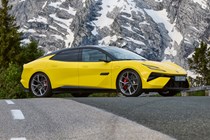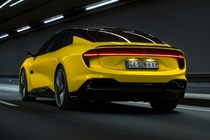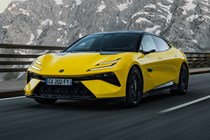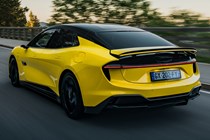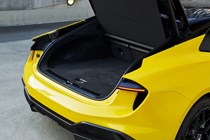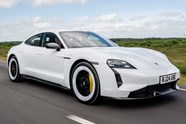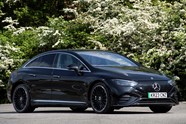
Lotus Emeya review
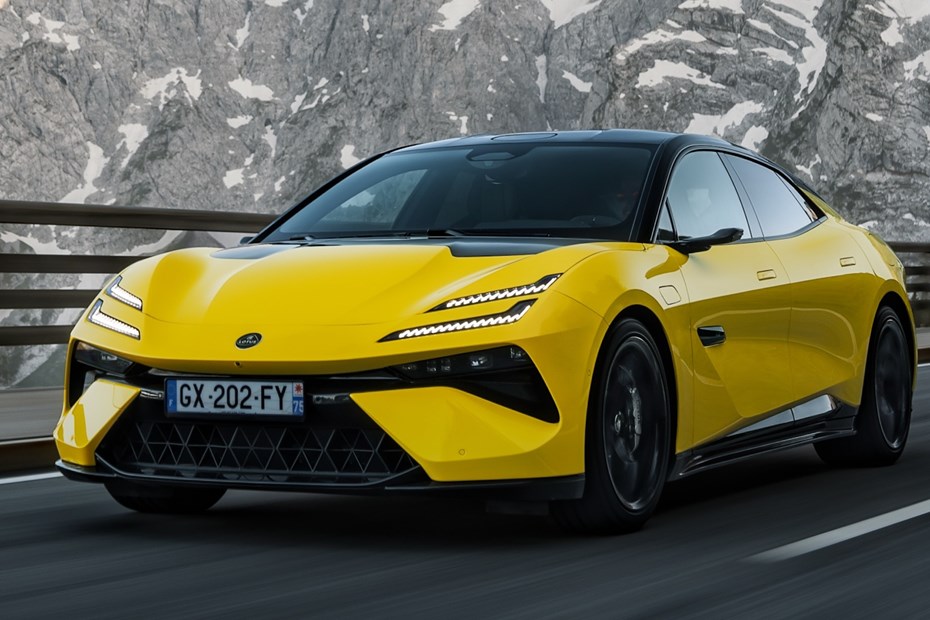
At a glance
| Price new | £90,805 - £137,755 |
|---|---|
| Used prices | £50,020 - £98,120 |
| Road tax cost | £0 |
| Insurance group | 50 |
Get an insurance quote with

|
|
| Fuel economy | 2.5 - 3.5 miles/kWh |
| Range | 270 - 379 miles |
| Miles per pound | 4.0 - 10.3 |
| Number of doors | 4 |
| View full specs for a specific version | |
Available fuel types
Fully electric
Pros & cons
- High-quality interior
- Comfortable ride
- Keen handling
- A Taycan is more fun
- Grabby ceramic brakes
- R a handful in launch mode
Lotus Emeya Saloon rivals
Overview
In case you missed the news, Norfolk’s premier sports car company now also makes luxury EVs. The Lotus Emeya is the brand’s second effort after the impressive Eletre SUV. It uses the same basic guts now shoved under a large 5.1m long five-door fastback body. Of course, it’s not that simple: there is a reconfigured battery to help lower the profile of the car, and improved cooling to cut charging times.
The base Emeya and Emeya S get a twin motor four-wheel drive system with 612hp. Jump up to the R and there’s an additional motor for the rear wheels to give a monster 918hp and sub-3.0 second 0-62mph acceleration. However, Lotus is quick to point out that this isn’t a direct rival for the Porsche Taycan. Instead, this is a bigger, more spacious car with greater levels of comfort and luxury.
It’s a bit bigger and pricier than the BMW i5 and Mercedes-Benz EQE, but costs less than the larger i7 and EQS luxury saloons. As for performance, the S isn’t quite as fast as an AMG or M, but the R destroys its German performance rivals. You’re looking at a Tesla Model S Plaid or Porsche Taycan Turbo to go faster.
You can find out more about how we test on Parkers via our dedicated explainer page. But in the meantime, climb in and let’s see if Lotus has nailed it.
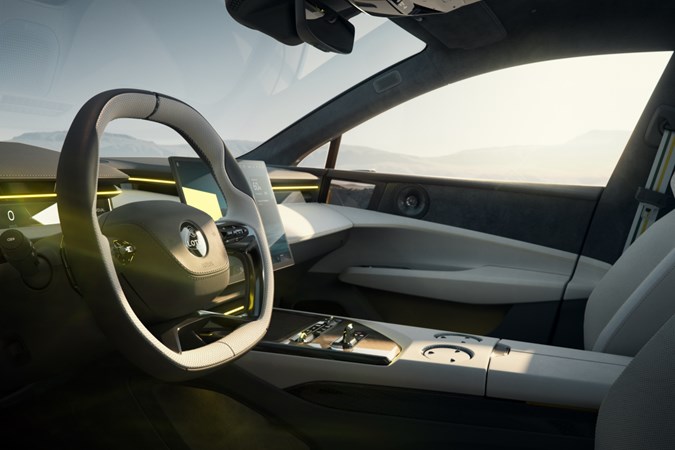
What’s it like inside?
If you’re familiar with the Eletre SUV there are no surprises here. If you’ve already got preconceptions of what a Lotus interior is like, then erase them from your brain and be prepared for a shock. Then Emeya’s interior isn’t just luxurious, it gives similarly priced BMWs and Mercedes a sound thrashing when it comes to quality and ambiance, too.
Now, our test cars were generously specced, but even a boggo base Emeya gets lots of supple Nappa leather, switches and buttons that work precisely and not a lot of visible plastic. Everything looks and feels solidly glued together, and there’s loads of standard equipment, too.
Standard five-seat Emeyas get a generous 509-litre boot – more than a BMW i5 saloon – with the more luxuruious four-seater dropping this to 426-litres. There’s plentiful legroom even with a six-footer behind the wheel, meaning four tall adults should be perfectly comfortable on a long journey. You might want to request front seat passengers raise their seat a little, though; there’s not a lot of room to stick your feet under the front seats with them in their lowest position. Headroom isn’t quite so good, but it compares well to the far less sleek BMW i5. You also avoid that car’s chunky transmission tunnel, instead getting a hump that’s only an inch or two high.
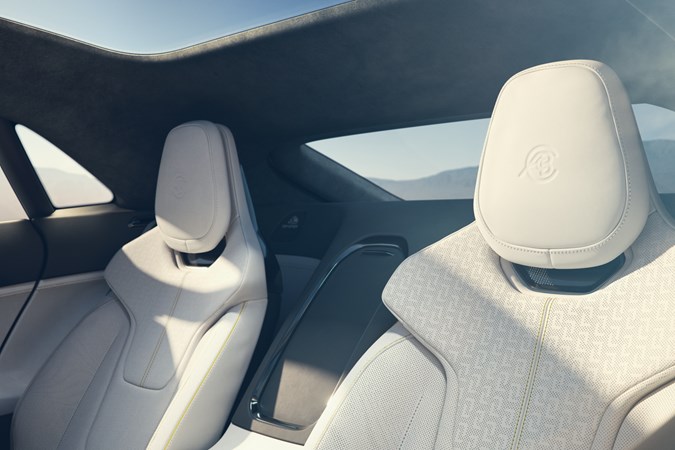
I certainly appreciated the tactile physical controls to change the interior temperature, set the fan to auto and a few other functions. Welcome as they are, I’d still prefer a few more buttons for things like the stereo and safety systems.
Disabling the lane assist and speed limit warning is something best done when stationary, while icons in overly full menus are too small. Let’s hope an over the air update or two might tweak the layout slightly to improve usability, although we’ve no complaints regarding the responsiveness of the system and graphical richness.
Comfort
So far I’ve only experience the Comfort seats that are standard on S and optional on the R. They have 12-way adjustment with memory, heating, cooling and massage functions, with enough adjustment to suit my six-foot co-driver and 5’ 4” of me. The Comfort pack also adds heating for the rear seats.
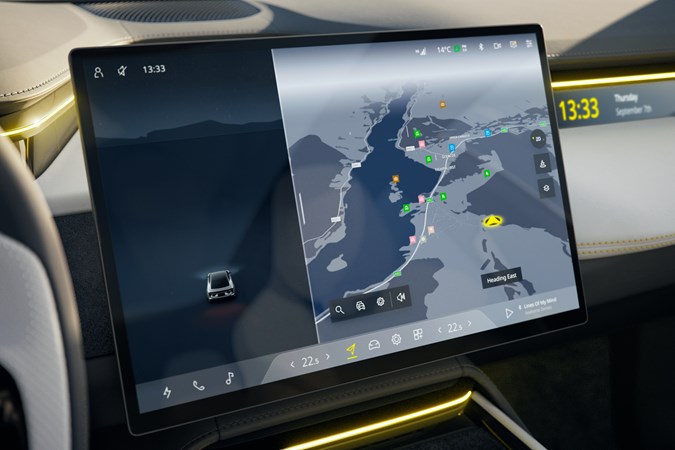
Rear seat passengers will want the Executive pack. You get the Comfort front seats plus electrically adjustable rear seats with cooling, heating and massage. I found the massage system to be better than BMW’s system, if not quite as good as Mercedes’.
The launch route really was a grand tour, with around 10 hours in the car over two days. The front seats were a joy over that time, although some may find the rear seats have a bit too much lumbar support. Wind noise was louder than expected, and there’s a noticeable thunk when the roof-mounted Lidar sensor is deployed.
Safety
Euro NCAP hasn’t crash tested the Emeya or Eletre, although you’d hope a new platform developed with the financial clout of Geely would be safe. There’s certainly an awful lot of tech to help prevent a collision in the first place.

This includes automatic emergency braking, rear cross traffic alert and collision warning, blind spot monitoring, traffic sign information and a driver monitoring system. There is also an optional Highway Assist pack that uses Lidar for more accurate assisted driving. It’s impressive on the motorway at the moment, but Lotus says it’ll be able to unlock more features via a software update as regulations allow.
What’s it like to drive?
Performance of the twin-motor Emeyas is certainly fast, if not quite as strong as you might expect for 612hp. That’ll be the whopping 2,590kg kerbweight before you’ve gone near the options list. Still, 0-62mph in 4.2 seconds is nothing to be sniffed at. Thanks to some time on derestricted autobahns during our long drive from Germany to Austria and back again, I can say that it’s strong well into triple-digit speeds.
The R’s acceleration is significantly more forceful. It gets launch control that’s only accessible with the car in Track mode and the ESC set to off. It catapults off the line and feels supercar fast, but you need your wits about you. The front motor is powerful enough to twist the steering wheel in your hands, sending it towards the white lines if you don’t correct it. Speed builds far faster as you approach and exceed 150mph than the S, too.
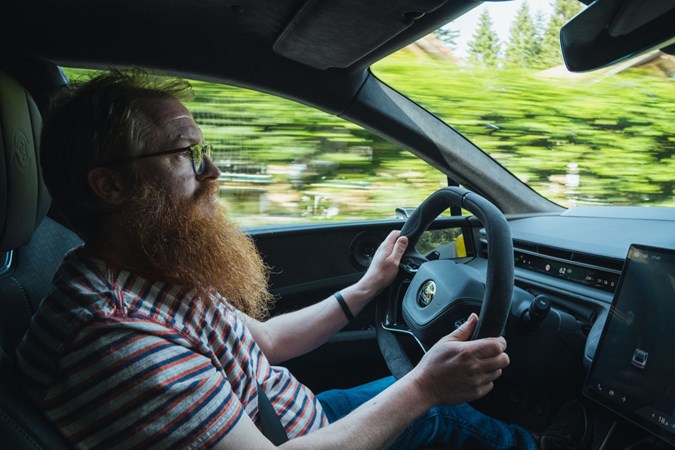
All Emeyas get air suspension and adaptive dampers with different modes, with roll-limiting active anti-roll bars and four-wheel steering standard on the R and optional on lesser models. The R is undoubtedly more capable and agile, turning in sharper, gripping harder and controlling its mass better. It remains neutral when pushed, but doesn’t have the involvement or playfulness of a Taycan or i5 M60.
With this in mind, it’s the S that’s the sweeter, more suitable choice. Even without the active anti-roll it corners with little lean and feels far lighter on its feet than its hefty weight would suggest. It feels more natural and is plenty fast enough cross country.
No Emeya is as softly sprung as the Mercedes EQS or BMW i7, yet its comfier than the EQE and i5. It’s on the sportier side of things, giving good body control and the expense of limo-like waft. It’s a much comfier option than the rather wooden Eletre, too. The steel brakes on the Emeya S are easy to modulate, although the optional carbon discs on our R test car were grabby at low speeds.

Range and charging
Stick to the Emeya and range is impressive at 379 miles, dropping to 336 on the S. Choose the R and this falls further to 270 miles. Lotus is claiming record breaking charging times thanks to an 800v architecture that supports up to 400kW charging speeds on a 600amp charger. The obligatory 10-80% rapid charge time is a mere 14 minutes at full whack, with a 350kW unit only adding a couple of minutes or so.
What models and trims are available?
There are three models to pick from: Emeya, Emeya S and Emeya R. The plain old Eletre gets 20-inch alloy wheels, electric Nappa leather seats, four-zone climate control, adaptive LED headlights, keyless entry and start, four-piston front brake callipers and an aluminium roof.
The main mechanical changes for S are 21-inch alloy wheels needed to cover six-piston callipers with larger brake discs. Other than that, the main extras are additional equipment including the Comfort seats we mention above, carbon fibre trim inside, soft close doors, a hands-free tailgate and configurable ambient lighting. You also get a Parking pack which will park the car for you via the infotainment screen or smartphone app.
Rs get a different selection of option packs. Over base Emeya, you get the soft close doors, hands-free tailgate and changeable ambient lighting, the carbon fibre for the interior, a carbon exterior pack and the Lotus Dynamic Handling pack. This adds four-wheel steering and active anti-roll bars to help control all 900+hp.
The Lotus Emeya is a fantastic performance EV bristling with tech, and is an interesting addition to the ranks of premium electric SUVs, but does it have the mettle to beat its rivals? Read on to see how we rate it after driving several versions at the international launch in our verdict.



